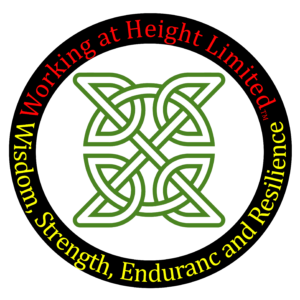Who is it for?
Standby Rescue Professionals, ERT providers, who are not healthcare providers. This Emergency First aid and Trauma at Height course’s is aimed at Work Place ERT’s and Rescue Professionals in hazardous and at-Risk environments and covers both theory and practical’s. We outline current applicable legislation. CPR/AED with respect to the observer is also addressed. This course involves actual hands-on techniques and exercises.
This course is for personnel who are expected to respond to incidences of serious traumatic injuries and medical emergencies at height that could possibly occur in Wind Turbines, Telecom Towers, Off Shore Platform, Pharmaceuticals & Petrochemical industries.
This course is designed around specific requirements and exposures particular to work at height structures were working in confinement is a requirement. It affirms through practical assessment and problem-solving exercises, the capability of participants to safely assess an emergency situation, communicate the need for additional resources, provide needed care for life threatening conditions, and effectively manage victim movement to the ground when necessary.
This is particularly important when responding Emergency Medical Services may be delayed by long travel distances, challenging terrain, and limited by lack of training to provide advanced medical care in elevated work spaces.
Learning Objectives;
- First Aid Site self-sufficiency when responding to trauma at height.
- High Performance CPR Proficiency.
- Team Mobilization and Incident Responding.
- Hazard identification
- Signage Identification
- ICS Setup
- Individual and Team Communication
- Personal Safety & Scene Safety
- Team Roles
- Increased ability for fast effective response.
- Rendering aid in an emergency situation.
- Implementing a rescue procedure effectively within ICS protocol.
Topics covered include:
- Legislation
- First Aid (Recap Only)
- Bleeding and control of shock
- Crushing/amputation injury
- Hyperthermia – Heat exhaustion/heat stroke
- Medical emergency – Heart Attack
- Chemical overexposure
- Hypothermia – frostbite
- Suspension Syndrome
- Head, neck and spinal injury
- Strained knee/ankle – slip, trip fall
- Electric shock with burns
- Back injury – overexertion
- Fall from height – multiple impact injuries.
- Advanced Skills
- Personal Safety & Scene Safety
- Team Roles
- Team CPR Switching Compressors
- Improving CPR
- High-Performance CPR
- Advanced Burns Care – Electrical and Fire.
- Neck Immobilization – Collar use
- At Height Half-Spinel board.
- Sam Splint’s
- Israeli Bandage
- Technical Rescue in open and restricted spaces.
- Incident Commander/Supervisor Protocol
Scenario Based Training:
The exercises presented in this course are a combination of classroom discussion and demonstration scenarios, major equipment application scenarios done in controlled surroundings, and advanced skill application scenarios performed at height in multiple levels. Each scenario evaluates scene safety and personal safety considerations, a detailed assessment of injuries or illness and victim movement considerations.
Minimum prerequisite:
This course is an enhancement of the pre requisite standard: Industrial Access & Technical Rescue. All delegates must hold a valid certification in one of the following to qualify for this course; Access & Rescue Certification, Rope Rescue Level 1, Rope Access Level 1, and must also hold a valid certificate in First Aid for Example: Pre-Hospital Care Council (FAR) Ireland, First Aid Responder Level 3 (United Kingdom), American Heart Association, American or Canadian Red Cross First Aid Certification (or other regional acceptable curriculums) and will prepare delegates to apply information from previous first aid and CPR/AED training to emergency situations that involve victim care at heights. All delegates must also hold Manual Handling Training Certification.
Delegates should also hold but nor required for this course:
Fire Safety Training Certification.
Assessment Method.
Written and Verbal .
-
- Written: Multiple questions theory paper will be issued with 20 questions. A minimum score of 80% is required to pass.
- Verbal: Verbal questioning throughout the course to ascertain comprehension and knowledge.
Skills Evaluation
-
- Delegate must perform required skills competently without assistance.
- Delegate are evaluated through Instructor observation of the reasonable performance of skills.
- Delegate must perform required skills in a team environment.
- Delegate must perform required skills as an ICS.
PPE Required:
- Helmet: 4 Point Anchor Helmet.
- Work Positioning and Fall Arrest Industrial Harness.
- Work Positioning Lanyard.
- Fall Arrest Lanyard.
- Limited Fall Arrester.
- Personal Rescue Kit.
- Safety boots with Toe Protection and Knee Protection
Total Course Duration:
Duration: 24 Hours
Certification and Accreditation:
An International Certificate is awarded to participants for completing this course based on the region where delegate is employed.
Technology:
N/A
Course setup:
N/A

